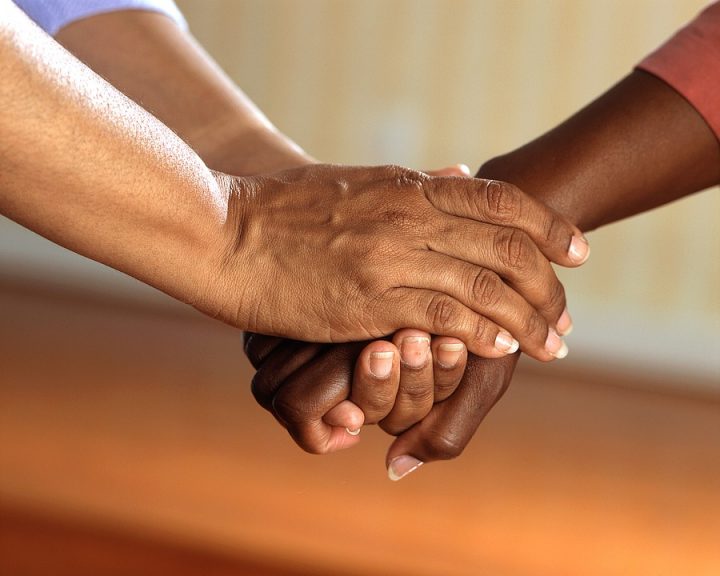It is popularly said that the only certainty we have in life is that we are all going to die. But, in truth, death is a concept with which we learn to live together in the course of our lives, and overcoming fear of it as we approach it is one of the great challenges of our Western-materialistic culture.
The certainty that we really all have is that we are born. As naive as this statement may seem, thinking about the way of birth leads us to think about the way of life and consequently about the way to die.
Birth is the leaving of the new Being from the maternal body, into the world. It is the moment when the human being emerges and in most primitive cultures, birth had a ritual characteristic as important as death.
Births were accompanied by a series of practices and rituals that prepared the mother, father and the whole community to receive the new Being from a social, cultural, emotional and spiritual perspective.But it is also true that childbirth, because it is a complex experience with an important biological aspect and activity, some results were not positive and death was often present in these experiences.
With the advent of modernity, technology and a culture that sought safety in its processes, since 1970, in several western countries, the birth left the sphere in which it was, losing the ritualistic characteristic it had, with increased importance of a guarantee of the greatest possible security, in the intention of producing good results.
The birth that used to take place at home passed, mostly, to the hospital environment and, like everything that happens in hospital institutions, became subject to routines and protocols. The experience of childbirth and birth then becomes much more impersonal, less intimate and less individualized. It is important to remember that in physiological delivery, that is, with the least possible interventions, the release of substances and hormones occurs both in women and in babies that are related by bond, love and well-being.
Then, more recently, women and men begin to want to return to these birth experiences, with the certainty that with the advancement of technology it is possible to have greater control over the physical condition of the mother and the fetus, so that the childbirth can again be a “complete” experience. This movement is known as the “humanization of childbirth and birth” movement and is present both in public policies and in the private sector of several Western countries.
What this movement affirms is that childbirth can follow its natural course in terms of rhythm, that is, that no measures are taken to accelerate the process. In addition, that the physiology of the same is respected and that the delivery care teams are prepared to support women in their needs, for example, offering pain relief measures, but it is the woman who decides what will be done with her and how it will be done throughout the whole process. Routine procedures with newborns are also strongly questioned, as today we know that there is a “golden hour”, that is, that the first hour of life is essential for the newborn to be in permanent contact with the mother to establish the link between them. In relation to medical interventions, such as caesarean section, they are welcome in case of real need.
This “humanization movement” is also observed with joy at another significant moment: the end of life, death. In recent years and under the protection of what we call Palliative Care and “end of life” care, a series of care measures that dignify and attend to people in all their dimensions, have been developed and perfected.
Palliative Cares are a model of care that improves the quality of life of patients with advanced diseases of lethal prognosis and that of their families, through the prevention and control of suffering with early identification, evaluation and adequate treatment of pain and other physical, psychosocial, existential and spiritual problems.Among its main features we can highlight:
– Provide control of pain and other symptoms.
– Affirm life and consider death as a normal process.
– Not try to advance or delay the moment of death.
– Integrate the psychological and existential aspects of patient care.
– Offer a support system to help patients live as actively as possible until death.
– Offer a support system to help the family in its adaptation during the patient’s illness and the period of mourning.
– They use teamwork to meet the needs of patients and their families, even after departure.
In all cases, the treatment unit is always patient-family-environment.
The sphere of attention is not only limited to physical discomfort, but it works with the person in a multidimensional way, also appreciating the emotional, social and spiritual sphere.
Adequate control of symptoms, control of physical pain, multidisciplinary treatment, attention of the person and their significant environment, tools to calm the mental suffering that arises in these situations, help with a deep reconciliation of the person with themselves and with others, and deepen the existential-spiritual dimension of those who go through the end of life process – these become fundamental objectives of the treatments in Palliative Care.
Birth and death are two moments of great personal and social significance that all human beings have in common.It is observed and hoped that, although slowly and trying to overcome many difficulties, in different parts of the world a human sensibility begins to grow that translates into multidisciplinary experiences and practices that we could frame as part of a process to “humanize health”. That is, integrate into clinical practices the aspects that compose human internal and spiritual life, understanding that only with a look and attention that integrates the physical, psychological and spiritual aspects will we be responding to the totality of the needs of every human being, and more precisely in these cases, to those who are traversing very significant moments, such as the “thresholds” of their lives.










